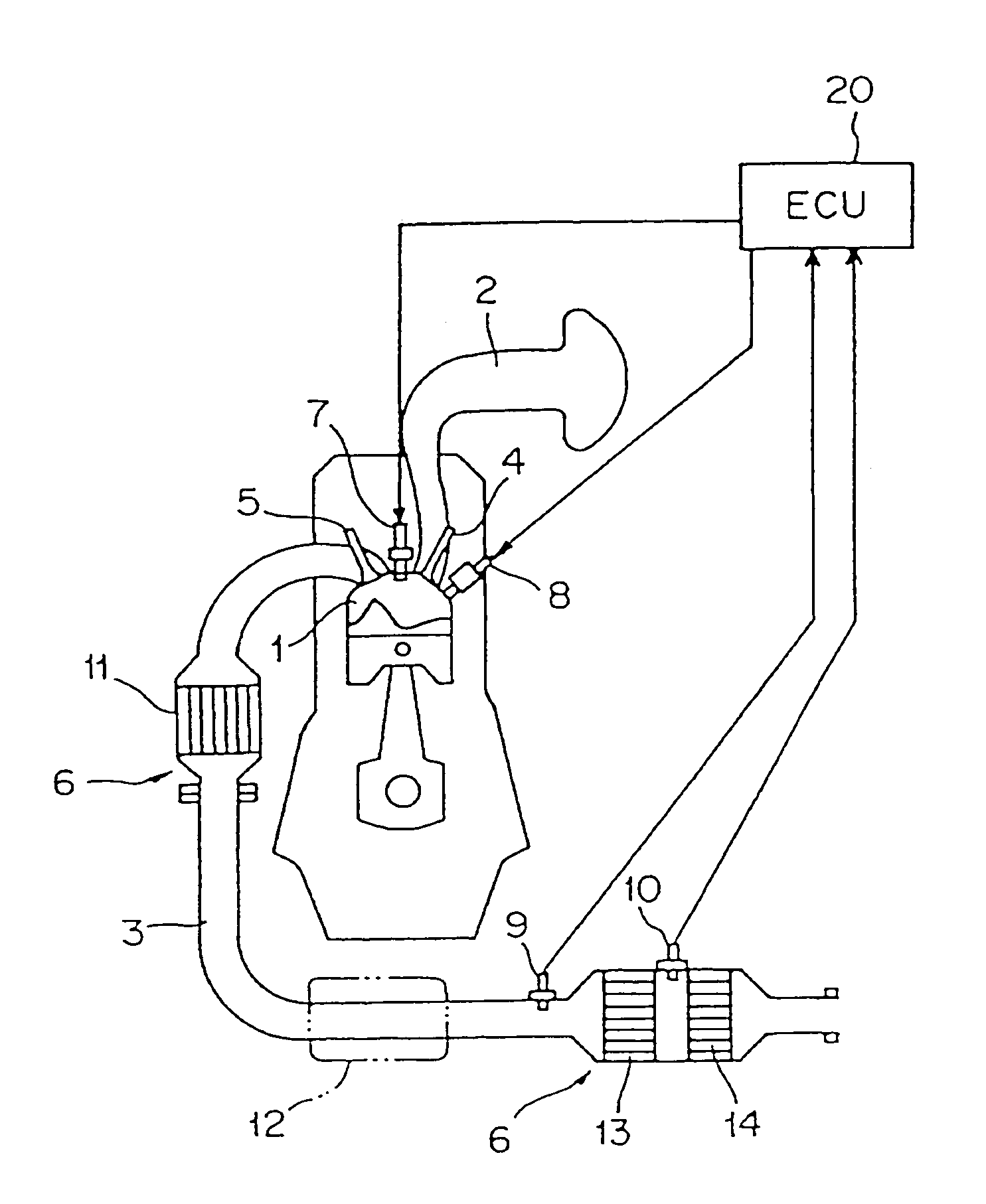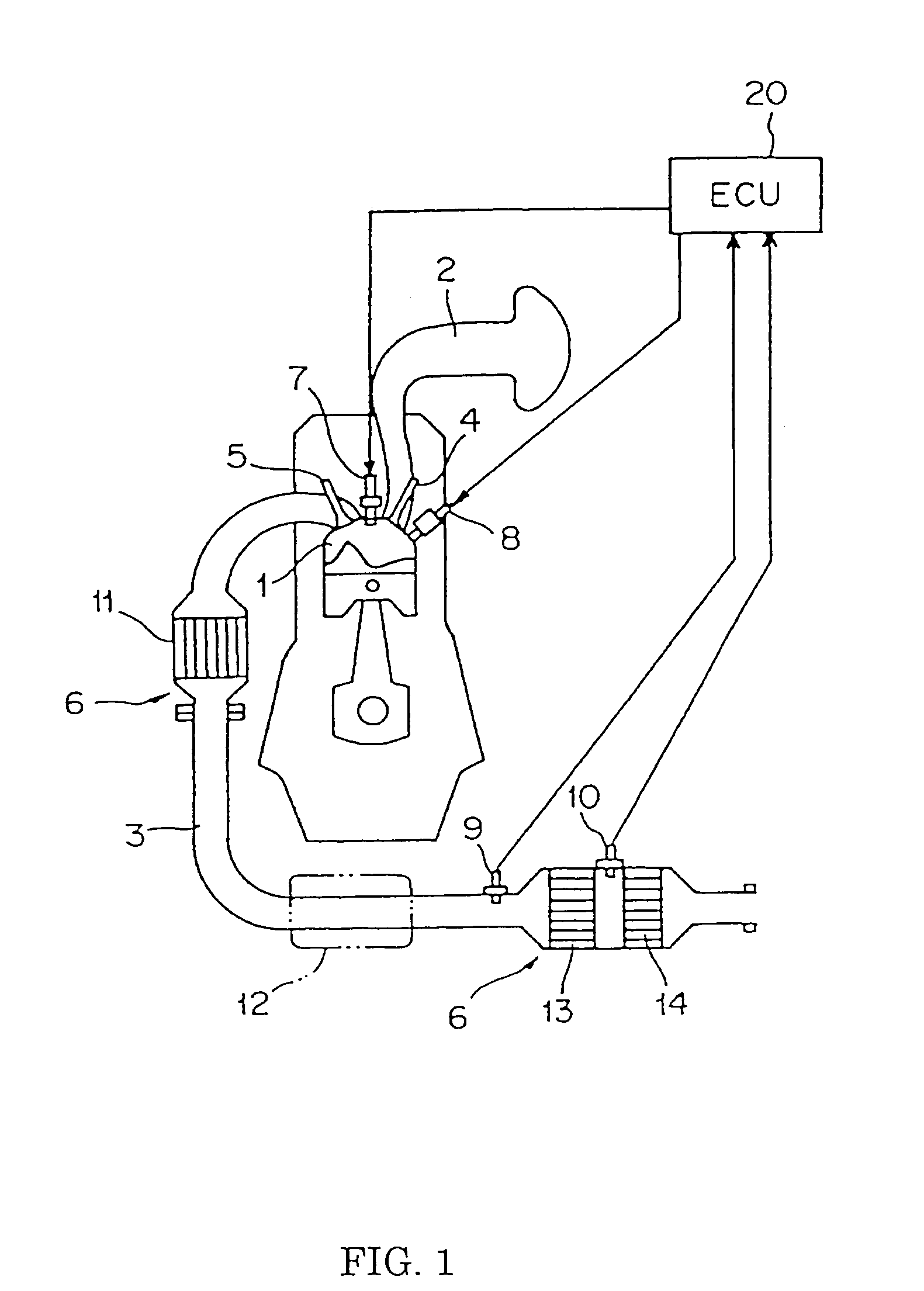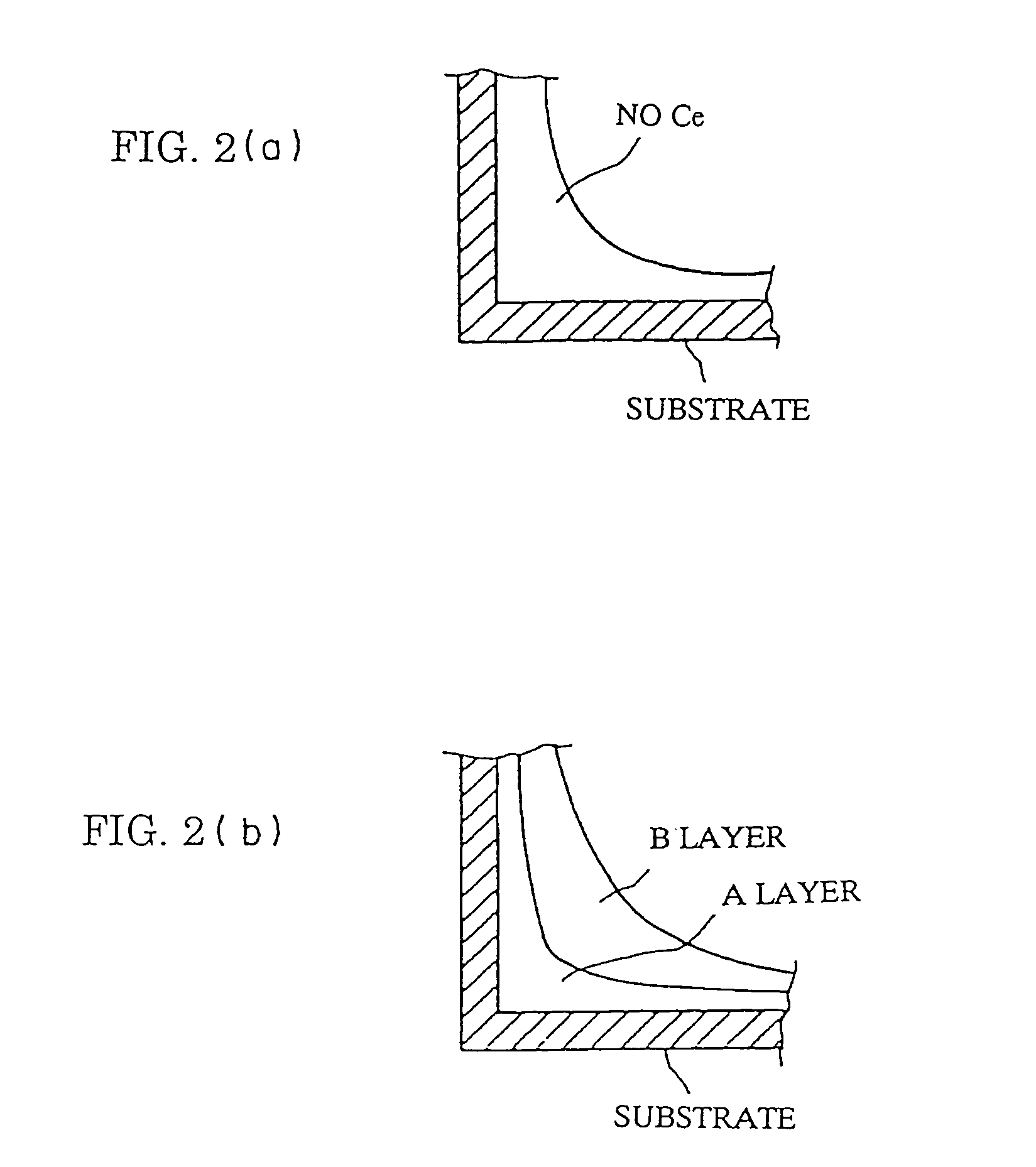Exhaust gas purifying apparatus of internal combustion engine
a technology of exhaust gas purification apparatus and internal combustion engine, which is applied in the direction of machines/engines, electrical control, separation processes, etc., can solve the problems of undetectable oxidation, difficult to sufficiently reduce undetectable nox in exhaust gas, so as to achieve advantageously reduce the o2 storage ability of light-off catalys
- Summary
- Abstract
- Description
- Claims
- Application Information
AI Technical Summary
Benefits of technology
Problems solved by technology
Method used
Image
Examples
Embodiment Construction
)
[0038]Referring to FIG. 1 through FIG. 8, an exhaust gas purifying apparatus of an internal combustion engine according to one embodiment of the present invention will be described in detail.
[0039]Initially, the internal combustion engine equipped with the exhaust gas purifying apparatus of the present embodiment will be described. The internal combustion engine, which is constructed as shown in FIG. 1, is a spark ignition type four-cycle engine that operates on the four-stroke cycle consisting of suction stroke, compression stroke, combustion / expansion stroke, and exhaust stroke. Also, the internal combustion engine of the present embodiment is constructed as an in-cylinder injection type engine in which the fuel is directly injected into a combustion chamber 1.
[0040]An intake passage 2 and an exhaust passage 3 are connected to the combustion chamber 1 so that these passages 2, 3 may be in fluid communication with the chamber 1. Also, an intake valve 4 is provided for controlling ...
PUM
| Property | Measurement | Unit |
|---|---|---|
| Volume | aaaaa | aaaaa |
| Temperature | aaaaa | aaaaa |
| Concentration | aaaaa | aaaaa |
Abstract
Description
Claims
Application Information
 Login to View More
Login to View More - R&D
- Intellectual Property
- Life Sciences
- Materials
- Tech Scout
- Unparalleled Data Quality
- Higher Quality Content
- 60% Fewer Hallucinations
Browse by: Latest US Patents, China's latest patents, Technical Efficacy Thesaurus, Application Domain, Technology Topic, Popular Technical Reports.
© 2025 PatSnap. All rights reserved.Legal|Privacy policy|Modern Slavery Act Transparency Statement|Sitemap|About US| Contact US: help@patsnap.com



